In this guide, we will cover the basics of dealing damage in the Last Epoch, including fundamental equations behind the big numbers you see on your screen. Here, we will present a variety of concepts to help you better prepare and understand the numerous options available to you.
Anyone who wants to achieve the best performance must ensure a good balance, without neglecting any of these results, which may lead to suboptimal outcomes. These stats work together to form the main skill damage. There are many ways to improve your damage in the Last Epoch, all of which are built upon the foundation of increasing, adding, and enhancing the base damage.
Unique and Node Passive abilities can also be found on Trees of Skills, but the most commonly found attribute on them is Increased Damage. Among all types of Items, the Damage Increased stat is abundant on the Passive Tree. Damage Throwing is an exception, as it is primarily found on Relics, Gloves, and Amulets Rings. The most commonly found attribute on Weapons and Passives in Skill Trees is Added Damage. While Base Damage can only be found on Skills, all types of Damage, including More, Increased, and Added, can be found on Passives and Skills.
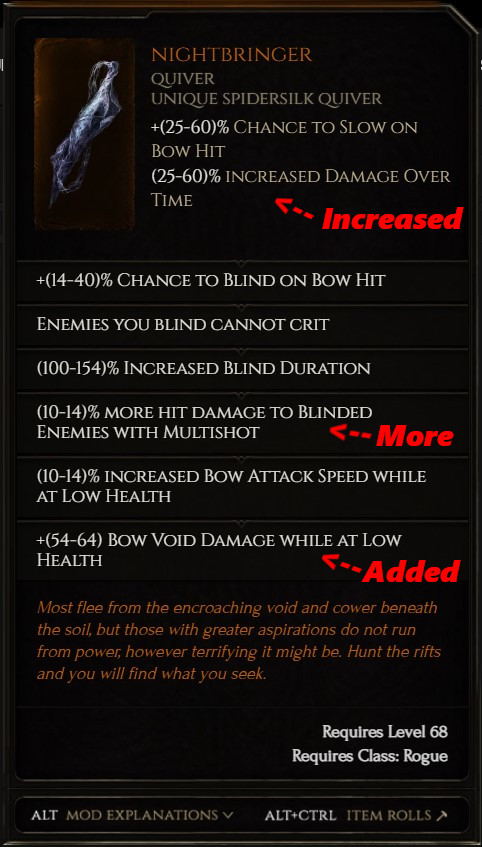
Base Damage.
The starting point for calculating damage in this case is everything except scales. Although it is very small, some skills have a certain amount of damage base.
Added Damage.
The Adaptive Type of damage is not limited to a specific source. If a skill is tagged as a Damage Spell., it will add 4 points to the base damage. This effect can be applied multiple times by using the Damage Spell..
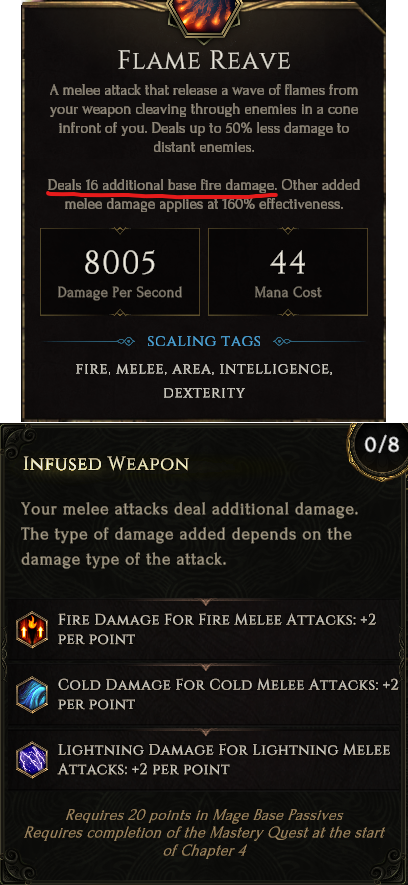
Increased Damage.
This type of damage is multiplied by added damage. Extra sources of increased damage combine to provide an even greater boost.
If you were to use a Fire Spell. and a Fire Spell. (with 150% Spell. and 150% Fire damage increase from two sources), the total damage would be increased by 16 and then multiplied by 4*(1+3) (resulting in 64*(1+3) damage added). Additionally, if you had Damage Increased and Damage Adaptive with a base damage of 4, the total damage would be more than double that of the Damage Increased and Damage Adaptive with a base damage of 10.
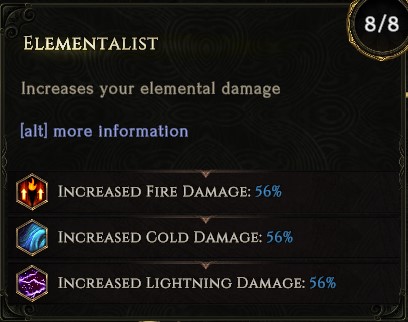
More Damage.
How mathematically works is that instead of quadrupling the damage from 16 to 25, we would multiply the base damage by 150% and then add it to the previous example where we had two sources of damage. Unlike the previous example, each different source of damage also increases the damage. Similarly, your damage from previous sources also multiplies the damage. This is similar to increased damage, but even more damaging.
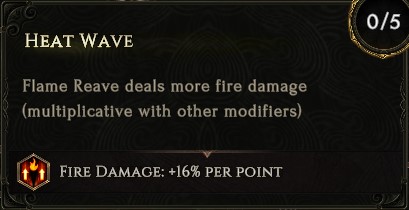
If you are looking to estimate a solid comparison for general rules, you may need to combine all sources of damage you deal with in order to be able to get an accurate reflection, but you will need some basic math skills to do so.
If this is good enough for you, then skip ahead to the next section. Otherwise, continue learning how to combine them.
To calculate the overall damage output by combining all three sources, follow this equation:
(Base + Added 1 + Added 2... )*(Increased 1 + Increased 2...)*(More 1)*(More 2)*...The equation would appear as follows: In this particular case, suppose we possess 3 of each Damage Type. We could potentially possess 4 sources of Enhanced Damage, thus we would simply aggregate that damage until all sources are taken into consideration. The three dots (…) Symbolize the possibility of scaling this up to any number of sources we have for that Damage Type. For instance.
(Base + Added 1 + Added 2 + Added 3)*(Increased 1 + Increased 2 + Increased 3)*(More 1)*(More 2)*(More 3)Now, let’s go through an illustration with actual figures. We possess:

Damage Increased is typically an exclusive source of increased damage, as slots don’t share the same affix (i.E. Modifiers). Neglecting it is a costly mistake as it not only multiplies the damage once, but also acts as a multiplier itself. Damage Added always provides a powerful scaler to multiply your baseline damage. There’s no doubt that Damage More is a highly desirable stat that can either make or break builds, depending on whether they can find enough Increased Damage or not. You may have noticed how powerful Damage More is.
Shred and Penetration
Let’s cover them separately, so we can reduce their defenses in different ways. Instead of directly increasing your damage, Penetration and Shred act as damage multipliers, determining how much damage your enemy takes. This is because the calculations for all player damage are done after considering how much damage your enemy takes for directly increasing your damage.
Like Ailments (in actuality, Shred is essentially a form of Ailment), they are administered in layers to the opponent in both instances, Armor (or Armour) and Resistance. There exist two types of Shred.
This Shred is very beneficial, as it increases the damage output of both the user and the enemy, regardless of their own defenses. However, enemies usually do not have any default Armor or Resistances, which can result in increased damage taken from the source.
Penetration decreases an opponent’s defense, but unlike shredding it:
Shred and Penetration decrease the enemy’s resistance, resulting in an overall reduction. To illustrate, if you possess 10% Fire Penetration and 4 stacks of Fire Shred on a non-boss foe, their Physical Resistance will be diminished by 30%. Conversely, Armor functions as a distinct form of defense that interacts multiplicatively with Shred and Penetration. It is not advantageous for Damage over Time (DoT) builds since it solely safeguards against direct attacks, whereas Shred and Penetration address this aspect. If you are utilizing a build centered around direct attacks, it is crucial to include both Shred and Penetration. However, for a DoT build, your main focus should solely be on Shred/Penetration.
The increase in damage taken is similar to penetration. The calculation of damage also includes an independent factor of penetration/shred. It is highly coveted as a multiplier in the damage calculation, therefore, the increase in damage taken is additive, similar to penetration/shred. However, there are multiple instances where the increase in damage taken is similar.
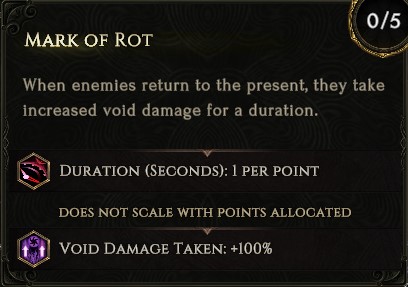
The output sentence is the same as the input sentence.
Some examples are provided here. The conversion of damage from different sources does not yield the same results. When considering the importance of the conversion factor, it is crucial to understand how damage occurs and whether it varies.
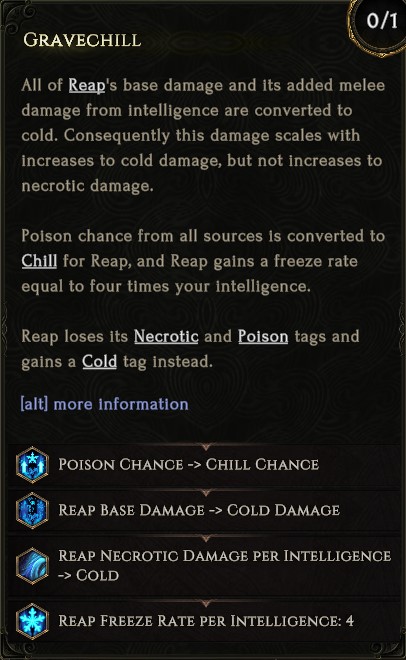
Making a mistake can be time-consuming and expensive, especially when conversions are not consistently handled. It is important to carefully read the description to know exactly how the conversion works if you are thinking about doing a conversion. The moral of the story is to be well-informed.
Everything has been treated much differently up to this point, as well as the unique mechanic called Minion Power and the exceptions to scaling Minions. We need to discuss what you need to know in order to properly scale your Minions. However, making different build strategies require much different treatment than the player’s Minions.
Minions: When it comes to size, why doesn’t it categorize this as a fall stat? Instead, it builds their needs by adding affixes and traditional damage statistics to a player’s Minion. What this implies is that these Minions have their own set of stats and independently scale their damage.
There are a few remarkable cases where a Minion ability can achieve player damage scaling.
This mechanic of scaling is what makes leveling minions even more powerful, with powerful minions being built for others. Your minions will deal 45% more damage and take 45% less damage at the maximum level. The power of your minions increases as they take and deal damage from other sources. Starting at level 26, your minions will gain 0.6% damage per minion level. Minions have their own unique way of scaling, based directly on the player’s level.
Calculating a DoT Skill
Damage Types and Ability Types
Let’s start by looking at how all the different types of abilities and damage types fit together. It can be confusing for players, but it can also be fun to combine the many options available. Melee attacks, poison spells, fire attacks, and physical throws are all possible. The Last Epoch genre, like many other games in the genre, allows for a large number of play styles and tastes to choose from, thanks to its variety of ability types and damage types.
Ailments can be applied and a Critical Strike can be a critical condition, and Critical Strikes can inflict damage at once. (DoT) Whether something is considered a Damage over Time or a single Hit depends on the first layer.
DoTs, in contrast to immediate damage, inflict their effects gradually over a duration, making them immune to Critical Strikes and generally incapable of triggering Ailments or ‘On Hit’ effects such as Health on Hit or Ward on Kill. However, by utilizing the Tear Flesh node, certain skills labeled as DoTs can intermittently apply ailments (e.G., Hail of Arrows). It is important to note that DoTs can also function as Ailments (e.G., Bleed, Ignite, Poison), but not all ailments fall under the category of DoTs (e.G., Chill, Shock, Slow).
Each case has its own separate component, in which both DoT and Hit skills have some abilities. However, both never have both a DoT and Hit, so you can either choose to deal damage with one of them or with both.
Here is a comprehensive list. It’s now time to determine what types of ability and damage types are used. Once you know whether the damage is DoT or Hit, you will be aware of the damage you inflict.
Let’s take a look at some examples of how Ability and Types Damage can be combined to properly scale in difficulty. If it’s not supported by a skill, you might find it challenging to find the proper scaling of Damage. However, passives and gear can also be added to enhance Type Damage. There are several Types Damage to choose from, and although there are a notable number of exceptions, most skills only have one Type Ability. However, these types can be combined in different ways.
Let’s start with an easy one. You’re a Hit based Throwing Attack. build, which means you’re only using Throwing Skills without any DoTs, and you have Increased Throwing Damage, as well as Increased Physical Damage. All of your Base Damage is Physical, so how do you determine how the Increased Damage is applied? Since all of your Base Damage is both Throwing and Physical, and all of your Increased Damage also falls under these two categories, you can simply add the Increased Damage together and then multiply it against your total Base Damage, like in the original examples.
When using a Fire Skill, the Physical Damage remains unchanged, meaning that it is applied as Physical damage to the target, unless the skill has Damage Conversion. If you have Adaptive Damage (such as the base damage on most weapons where a specific damage type is not mentioned), it will always convert to the Damage Type of the Skill being used. In this scenario, your Increased Melee Damage will be applied to all of your Added Damage, while the Increased Fire Damage can only be applied to the Fire portion of your Added Damage. Additionally, you have both Increased Melee Damage and Increased Fire Damage. You prioritize using added Fire Damage whenever possible, but since the weapon you are using also has some Added Physical Damage, you can only use a Melee Skill. Now, let’s consider a second example where you are a Hit-based Melee Fire build.
For the last example we’re using Fireball; this is a Hit based Fire Spell. that does Hit Damage, but we’re also applying Ignite on Hit. Ignite is an Ailment that does Fire Damage over Time (is a DoT). We have Increased Fire Damage, Increased Spell. Damage, and Increased Damage over Time. Here’s how it plays out:
There are multiple ways in which a player can combine different kinds of damage, but this can also create problems for players who aren’t considering how each kind of damage scales and synergizes with everything else. Understanding how to maximize your damage is key, so it’s important to consider the benefits of scaling on misses.
Whenever we handle character stats, it is important to include calculations for critical strikes. This is because critical strikes seem to start at triple damage, making it appear that the critical strike multiplier is currently showing a misleading base of 200% on the character sheet. Note that skills have a baseline chance of 5% to land critical strikes, and damage cannot be increased for damage over time effects. Critical strikes are another way to significantly improve damage, as they can be very powerful when properly scaled.
There are generally three ways to increase your chance to land a critical strike: increasing the critical strike chance, adding critical strike chance, and increasing the amount of damage when a critical strike succeeds (known as the critical strike multiplier).
‘Elevated’ never declares and states the of front in ‘+’ a has consistently. A critical strike has a straight numerical increase on your chances.
If you have no other sources of Critical Strike Chance, you can increase your Critical Strike Chance by 10% of your total chance on a melee attack. If you have a weapon with a 5% chance of Critical Strike, then this would just add to your base Critical Strike Chance on a melee attack.
This is a multiple of the total of your Base and Added Critical Strike Probability.
We would calculate our chances to get a Critical Strike as follows. Additionally, our chances of Critical Strike have increased by 50%, but we still have a +5% Chance of Critical Strike on our melee weapon. For example.
(5+5)*(1+.5) = 15%The Rogue does not receive any help from Avoidance Strike Critical to negate Critical Strikes, and the chance for the enemy to access Vulnerability Strike Critical, which increases the chance of receiving a critical strike, is increased. However, Overcapping Critical Strike Chance beyond 100% does not provide any additional benefit against Avoidance Strike Critical. It is guaranteed that you will not have any Critical Strike Chance against the enemy when using Avoidance Strike Critical.
Nodes that provide increased Critical Strike Chance function in a similar manner to increased Damage, as they are multiplied with Added and Increased (as well as other sources of enhanced Critical Strike Chance, if applicable). However, these nodes are far less common than those that increase Damage, which means that most builds do not have the opportunity to utilize them. It is worth noting that there is another method to enhance your Critical Strike Chance through the skill tree.
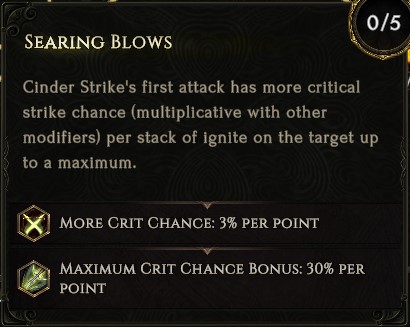
We multiply our damage by a critical strike multiplier whenever we have a critical strike. This is similar to Increased Damage in other works. In this calculation, we have two sources that provide a 50% Critical Strike Multiplier, and it also increases our Critical Strike damage. For example, if we would normally do 100 damage with a regular hit, we add additional sources of Critical Strike Multiplier and multiply our damage.
(100)*(2+.5+.5) = 300, where '2' is our baseline Critical Strike Multiplier before the additional sources are added.Here is the representation of the equation we have been dealing with for a Hit that is also a Critical Strike:
(((Base + ((Added 1 + Added 2...)*(Effectiveness)))*(Increased 1 + Increased 2 ...)*(More 1)*(More 2)...*(2 + Crit Multi 1 + Crit Multi 2...)These are the stats that increase the rate you can use a particular skill. Almost all skills can scale Attack or Cast Speed, but there are exceptions (i.e. Disintegrate only scales the initiation of the cast, not the speed at which it applies DoT damage) as well as skills that convert Attack/Cast Speed to another stat (i.e. Dancing Strikes converts Attack Speed to More Damage). Generic Attack Speed applies to all attacks, while Cast Speed applies to all Spell.s. There are also more specific versions of Attack Speed (Melee Attack. Speed, Throwing Attack. Speed, Bow Attack. Speed) that apply only to skills with the appropriate tag.
Attacks are dependent on the base Attack Speed of a weapon, whereas cast speed is unaffected by a weapon’s base Attack Speed. To calculate speed, a distinct equation must be employed for Attack Speed compared to Cast Speed.
Take the base Attack Rate of the Spell., then apply any increases to Cast Speed, with multiple sources of Increased Cast Speed being additive.
We need to factor in the base Attack Rate of the Spell., the base Attack Rate of the weapon, and our Increased Attack Speed.
Damage over Time (DoT) consists of any damage that is spread out over a period of time. This is in direct contrast to Hits that deal all their damage at once. DoTs can either be from Ailments (i.e. Ignite, Poison., Bleed) or skills that have the ‘Damage Over Time’ tag (i.e. Disintegrate, Maelstrom). Since DoTs cannot Hit, they cannot crit or apply ‘on Hit’ effects (i.e. Chance to Poison on Hit).
There are various methods to expand DoTs.
DoTs all share the same tick rate (the rate to which DoT damage is actually applied) that cannot be increased. Instead many DoTs (specifically Ailments) are primarily scaled by increasing the chance to apply that Ailment on every Hit. As noted previously, this chance can go above 100%, allowing the player to apply multiple stacks of an Ailment on each Hit. Example: If you have 250% chance to Poison on Hit, then for each Hit you are guaranteed to apply two stacks of Poison and have a 50% chance to apply a third stack. Some Ailments (i.e. Time Rot) have a cap on how many stacks an enemy can have on them and that number cannot be exceeded, not even by your application chance or how many skills you use to apply the Ailment. However the major DoT Ailments (Bleed, Poison., Ignite, Frostbite, Electrify) have no cap, meaning the player is only limited by how quickly they can apply stacks to an enemy and their Ailment duration.
Calculating a Hit Skill
Math Notes
The effectiveness of these play skills can be enhanced by applying different skills that add 200%, 100%, or 50% of damage. Let’s explore how this works: while some skills give a smaller amount of damage added, others give a larger amount. In some cases, not all skills apply the same amount of damage added. It would be reasonable to assume that all skills apply the damage added in the same way, but there are actually different skills that have different effectiveness of damage added. These circumstances are discussed in the section above, where equations are used to illustrate the typical scenarios.
50%: 25 Additional Damage.
100%: 50 Extra Damage.
200%: 100 Additional Damage.
You can see that this equation is very simple and straightforward. However, at this time, we have a new multiplier specifically for added damage.
(added)*(Effectiveness)In this particular case, we don’t need the additional ‘1’ in the equation above if the plug is at 50% effectiveness. Unlike the baseline where there was 0% damage increase, here the effectiveness of the damage added is 100%.
(50)*(0.5) = 25Now, let’s incorporate the Enhanced Damage Efficiency into the broader damage formula from the preceding section:.
(((Base + ((Added 1 + Added 2...)*(Effectiveness)))*(Increased 1 + Increased 2 ...)*(More 1)*(More 2)*...Adhere to the initial equation. Starting from this point, include that digit to your Base Damage. Multiply them by Effectiveness, then combine all of your origins of Additional Damage. It can be consolidated in this manner: If this appears perplexing to you.
This is not the case. It is assumed by many players that the effectiveness of damage added is already factored into the nodes in the skill tree, especially since they only apply to the skill. Skill tree nodes can be misleading, especially since they only apply to the skill. The effectiveness of damage added applies to all sources of damage added.
Damage Variance and Enemy Damage Mitigation
Two factors contributing to this phenomenon are: the tangible harm inflicted upon adversaries during gameplay falls short of anticipated outcomes, which becomes evident upon calculating the extent of your damage.
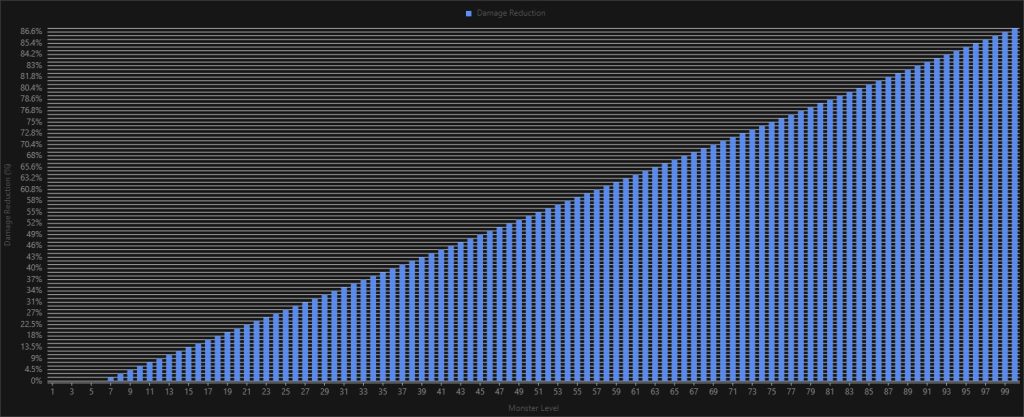
The fluctuation is consistently present. Nevertheless, you can acquire a more accurate understanding of your harm without the global harm decrease by utilizing the examination mannequins.

Use this tool as a very basic comparison option to obtain any information you need from a large grain of salt. It is also historically overvalued that some sources of damage, like DoTs, are very large. We advise against heavily relying on this tool because there are many factors that the calculator does not consider, including Debuffs on the enemy. You may be tempted to use this as a barometer for your damage and you may have already noticed that there is a DPS calculator for every skill.
We’re not just looking for examples of single-target damage in DPS since we’re also considering Attack/Cast speed. These examples are meant to show how all the concepts fit together. Make sure you have a solid understanding of what we’ve covered in this guide so that you can calculate the expected damage and put everything together where we’ve provided three case examples in this section.
Please note that the process of determining damage may remain the same, but the numbers involved can vary depending on the situation in which you are playing. These examples use data from the 0.8.5 patch.
Calculating a Damage Ailment
Authored by McFluffin. Reviewed by Facefoot, Lizard_IRL, Raxxanterax.